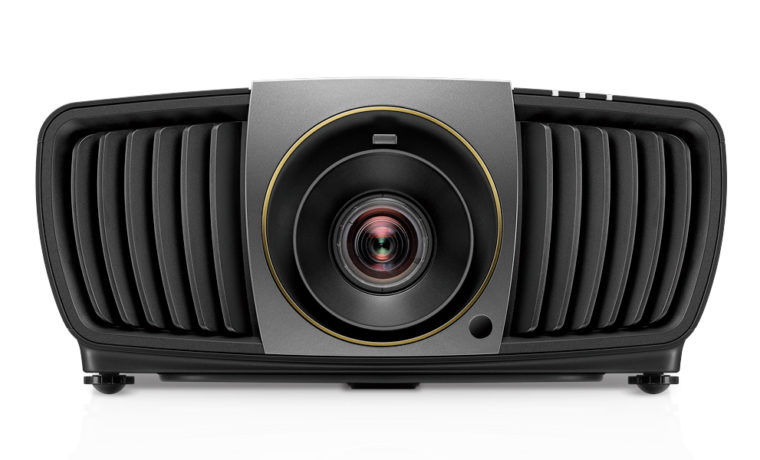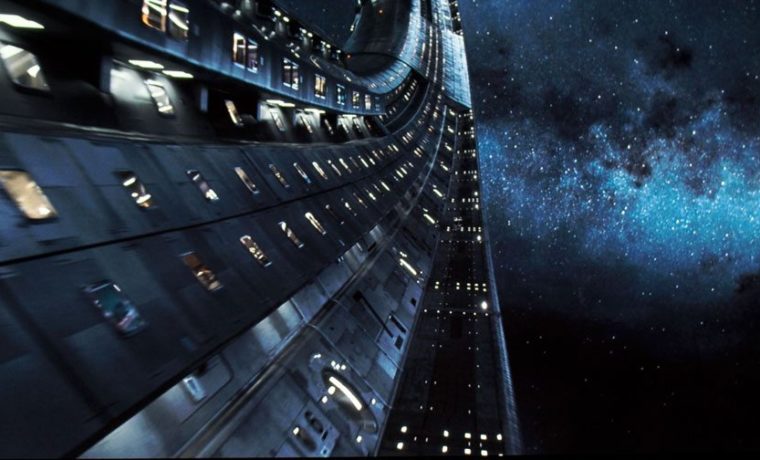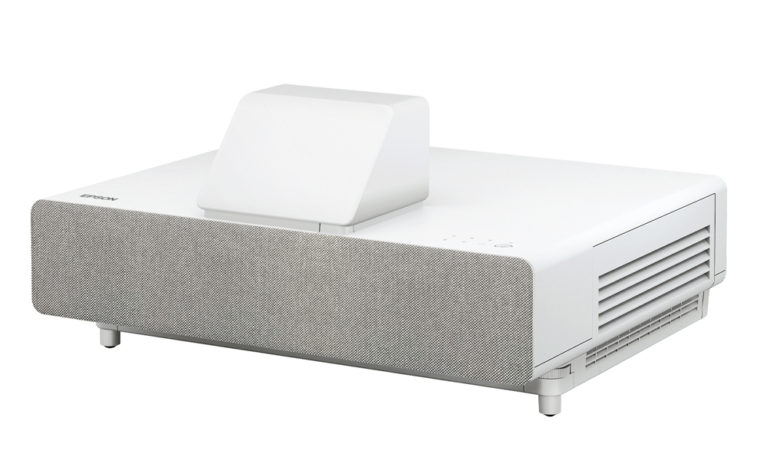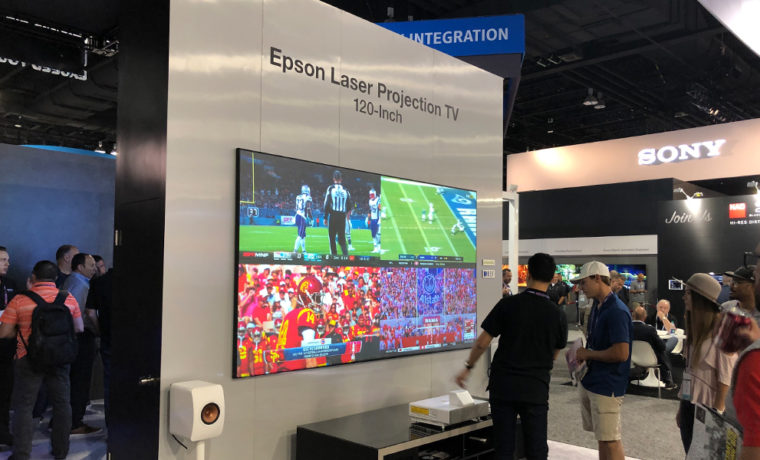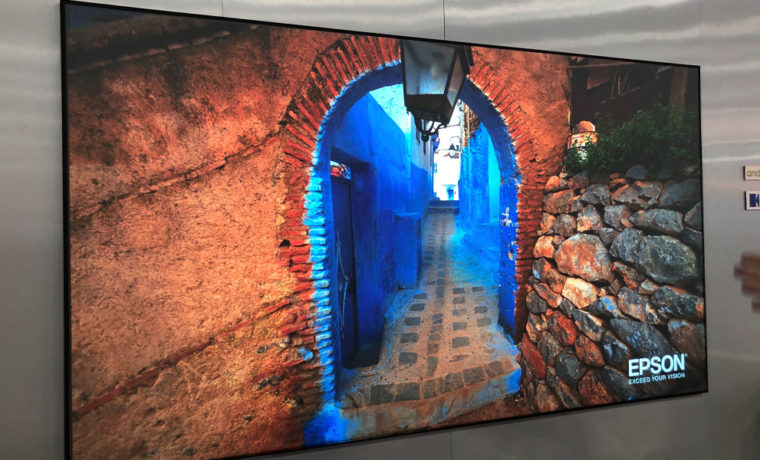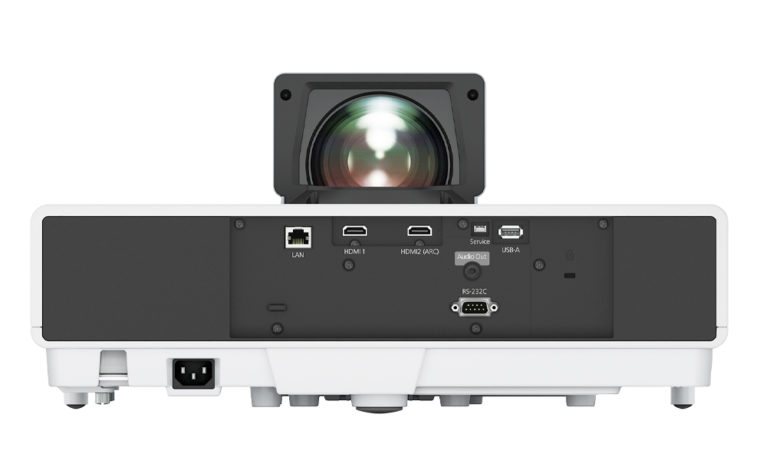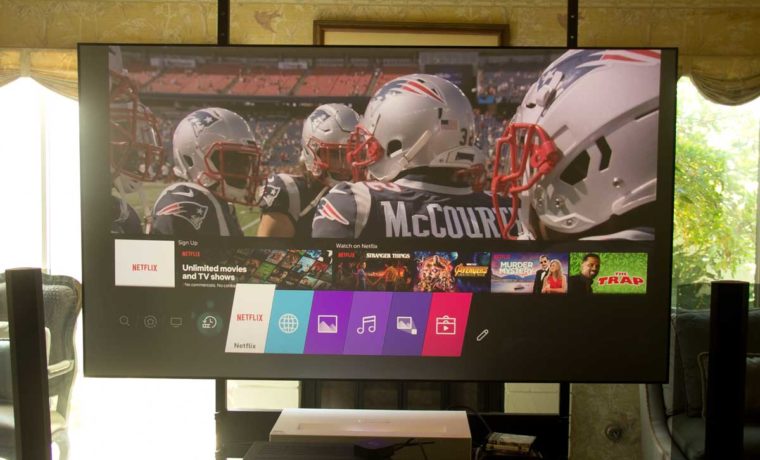With the HT9060 shipment, BenQ is fast re-establishing itself as a real leader in serious performance home theater projectors. This BenQ is geared for that “person-cave” or dedicated home theater. The HT9060 takes its picture quality very seriously. This is a DLP projector built to compete with well-received home theater projectors, such as those from Sony, JVC, and SIM2 – all top quality names. It is definitely a major “cut above” the traditional laser and lamp based DLP projectors that typically sell for under $5K, or even under $1,500 (lamp based), in part due to higher native resolution and great optics.
I’ll tell you a story in a moment, but first: The Basics.
The HT9060 is a 4K UHD DLP projector that uses the higher resolution DLP chips. The HT9060 claims 2,200 lumens and has a MSRP of $8,999.00 (same as the HT9050 it replaces). It uses a solid-state LED light engine (the most serious LED projector I’ve seen to date). Placement flexibility is very good with a 1.50:1 manual zoom lens and a whole lot of lens shift, too!
BenQ has always “focused” on providing very high-quality optics on their top of the line home theater projectors. We found that to be true when we reviewed this projector’s predecessor. We plan to review the HT9060 in the near future, but we can draw a lot of conclusions from our past experiences with BenQ in general, and the older HT9050.
Relating to resolution: Most 4K UHD projectors use 1920 x 1080 chips – and pixel shift hitting the screen 4 times. This BenQ HT9060 uses DLP chips with twice the total resolution: 2716 x 1528, which means much smaller pixels and only the need to pixel shift one time to hit the 4K standard!
The HT9060 supports HDR – both HDR10 and HLG (broadcast, streaming), which together BenQ calls HDR-PRO (seems everyone’s got to trademark this kind of stuff for marketing purposes).
And, this BenQ supports DCI/P3 color, same P3 color as your local high quality 4K digital cinema movie theaters at the mall (and the older HT9050). In fact, other than the lens not being motorized, this BenQ is rather feature-laden.
Now, it’s time for that story! Two years ago, when we reviewed the HT9050, we were impressed, overall, but for one thing. Like a number of the early 4K capable projectors (very true of the early Sony, JVC projectors, and others), the 9050 lacked HDR support. About that time, we started seeing HDR support (first gen – not great) on many projectors, some far less expensive. That older BenQ, though, supported P3 color (one of the best attempts from a DLP), which almost no others did at the time.
Still, the older 9050’s lacking HDR was a serious disappointment!
No longer. The HT9060 has that HDR10 that the older projector lacked, and it adds support for the newer HDR called HLG (Hybrid Log-Gamma, for those who care). Excellent. How good the HDR will prove to be, we’ll know for sure when we review this projector. We’ve recently reviewed two less expensive BenQ home theater projectors – both do HDR rather well, as BenQ’s had lots of practice.
I expect great things because – there was a time when BenQ ruled quality home theater (unless you were rich enough to afford a Runco (super-high end company). Runco even used to OEM BenQ models, make some enhancements and sell them as their “entry level” Runco models (for well more than $10,000), when the BenQ’s were selling for about $5,000, because of having optics that are “a cut above” (just like BenQ did 10 or so years ago when 720p resolution ruled the world of projector-based home theaters).
I owned three BenQ projectors in a row back then, simply because they were the best around under $10K, with models like the HT8720 (and HT8700 before it).
Back then, those projectors were the best performance choice without spending at least twice as much! I enjoyed all three immensely at those times. Not too long after the last of those models, I replaced it with a couple of 1080p JVCs and Epsons, until 4K…
So, here comes the HT9060, built with the same high-performance mindset as those older BenQs that I owned – and back then they were also far more expensive than Optoma’s Epson’s etc.
A richly colored, elegant picture is what you should expect from BenQ’s flagship, the HT9060. If this projector is in your budget, you’ll definitely want to consider it, as an alternative to those aforementioned Sonys, or JVCs in its price range, one that serves up that excellent DLP “look and feel.”
The HT9060 should also have better black levels than the lower cost HT5550 (a favorite), which does pretty well in that regard. The solid-state light engine helps!
Perhaps one of the best reasons for considering this BenQ is that famous “look and feel” of DLP projectors vs the other technologies. I’ve long written about that (20 years now), often describing that DLP advantage as being great at reproducing dark scenes with rich, yet not over the top colors, better than 3LCD or LCoS. Long I had considered another DLP, but few had the black level performance I treasure. The BenQ HT9060, however, should provide the quality handling of dark scenes (richness and blacks), that just aren’t there on those many lower-cost DLP home theater projectors.
I seriously doubt there’s a single chip DLP home theater projector under $10,000 that comes close to the HT9060, in terms of performance/picture quality/sharpness. You’ll definitely want to check it out. Being a serious projector for home theater lovers, the HT9060 is sold through trained and authorized local integrators and dealers. Sorry, no Amazon for you DIY types, but you can buy direct from BenQ.
Be excited about the BenQ HT9060.
For those of you pretty new to projectors, understand that there are a lot of enthusiasts who are huge DLP fans, but have long waited for projectors like the HT9060 that can meet their desire for “ultra-high contrast” black levels, in addition to great image processing including HDR/P3, and enough brightness to rock your world on a pretty large screen. 150”diagonal should not be a problem, but we’ll know when we review this BenQ!

